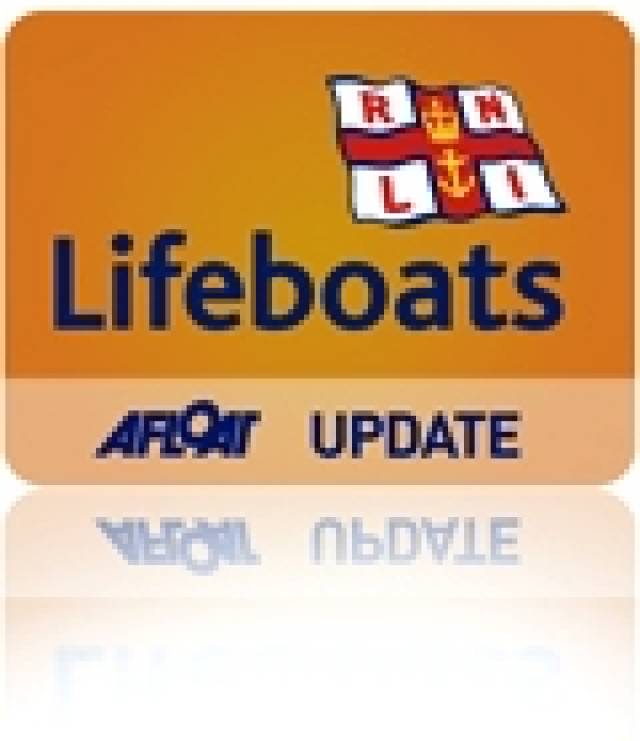#RNLI - Lough Swilly RNLI rescued five people onboard a 50ft fishing boat yesterday evening (Sunday 2 December) after the vessel’s engine broke down in Co Donegal.
During what was a nine-hour callout in tough weather conditions, Portrush RNLI also launched to assist the stricken Mary Ellen.
Volunteer crew members from Lough Swilly had been attending a commemoration in Portsalon when they were requested to launch to the boat that had broken down some 10 miles further on, a mile-and-a -half from Fannad Lighthouse.
The all-weather Tyne class lifeboat arrived on scene at 3.15pm where the crew observed a steel crabber with five men onboard. The fishing boat was carrying a load of crab.
Weather conditions at the time were described as blowing gusts of between gale force 5 and 6 up the lough.
The crew pursued to establish a towline and commence the return journey to shore. After towing the vessel for a couple of hours into the dark, the tide began to turn, making the pull more difficult. A relief lifeboat from Lough Swilly and Portrush RNLI were requested to launch to assist.
Irish Coast Guard helicopter Rescue 118 was also on scene in the event that the stricken vessel’s crew would need to be evacuated.
As the boat was being towed up the lough it lost all power and VHF was transferred from the lifeboat for communication.
When Portrush RNLI arrived on scene, the crew assisted with the tow while the Lough Swilly relief lifeboat stood by.
The stricken vessel’s mechanic managed to restart the engine during the tow and the vessel made its way into Rathmullan while the Lough Swilly lifeboat stood by in case it required further assistance.
John McCarter, Lough Swilly RNLI lifeboat operations manager, paid tribute to the lifeboat crew who arrived back at the station in the early hours of Monday morning.
"This was a long callout in difficult weather conditions and we are glad that we were able to assist this vessel and her crew in making it to shore safely,: he said.
"This was a testament of the commitment, skill and selfless nature of our volunteers who are always willing to give their time and readily leave the comfort of their homes to face challenging conditions to help people who find themselves in difficulty at sea."
Joe Joyce from the lifeboat crew told BBC News that the nine-hour operation was "an unpleasant experience" but reported that "everybody was safe and well".































































